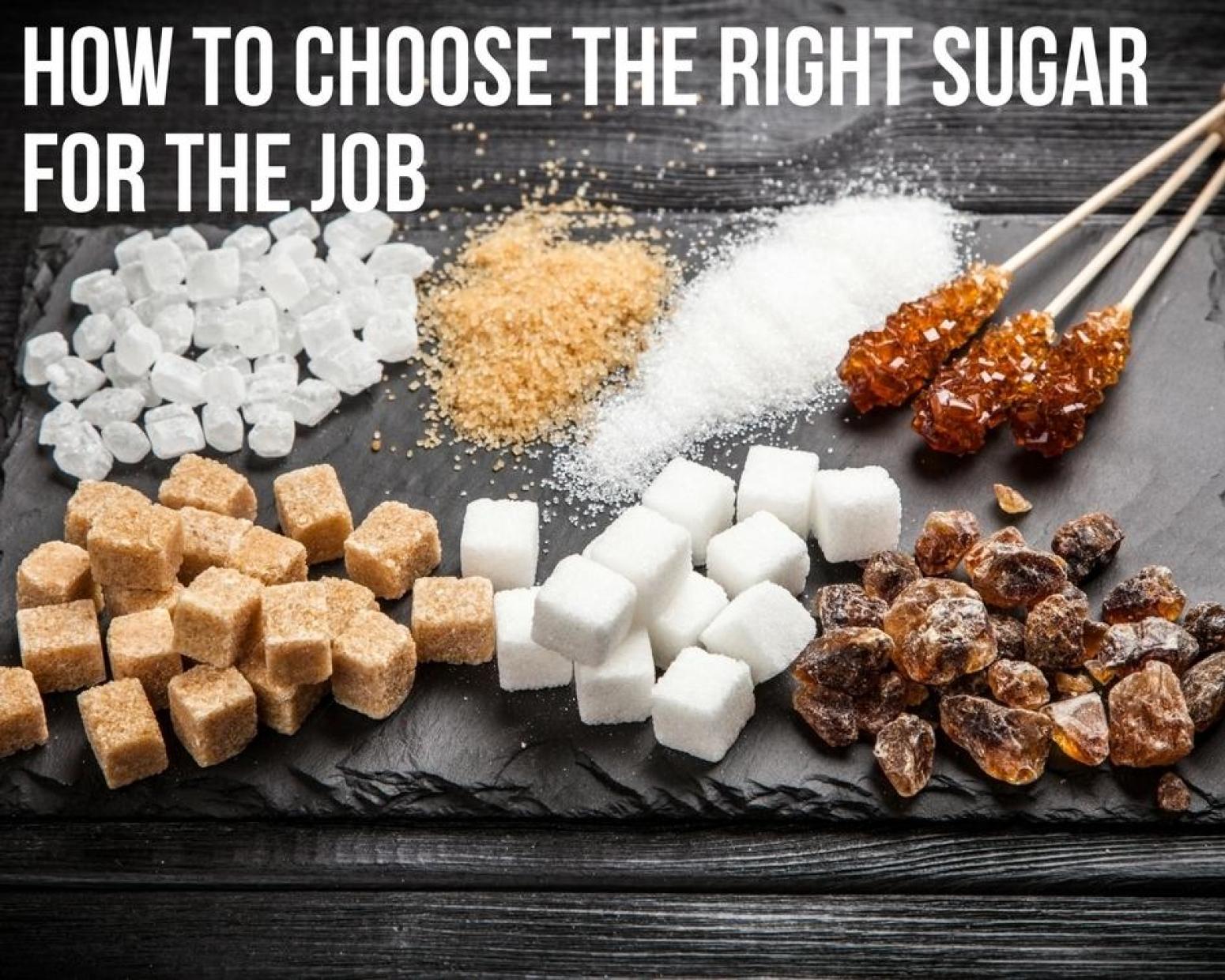Let’s face it, any time you are adding sugar to something, it’s going to be a fun product. If you want your masterpiece to come out as expected, though, you’ve got to use the right kind of sweetener!
Cane Sugar Types
Powdered (Confectioner’s) Sugar – This is the finest sugar that can be purchased. To prevent clumping, it has about 3% cornstarch added to it. Keep this is mind if you are cooking for someone who is on a grain-free diet.
White Granulated Sugar – The most common type of sugar and what most recipes call for. You won’t have a problem finding this at any store.
Coarse Sugar – This type of sugar has much larger crystals and is typically used for decorating or flavor accent.
Turbinado Sugar– Popularly known as “sugar in the raw” has the same crystal size as coarse sugar but is a blonde color. Only the surface molasses has been removed, typically thought of as the least processed type of cane sugar you can buy.
Brown Sugar– Although one would think that brown sugar is less processed than it’s lighter in color counterparts, brown sugar is just white granulated sugar with molasses mixed back in. Easily accomplished at home by adding one tablespoon of molasses per cup of white sugar using the food processor. However, keep in mind molasses can be hard to find except during the holidays so you might be better off stocking up on brown sugar.
Muscovado Sugar – Is “real” brown sugar. The molasses was left in during the refining process which although fine in texture can be very sticky. It also imparts a unique depth of flavor typically reserved for traditional holiday flavors such as gingerbread.
Coconut, Date, or Maple Sugar – These types of sugars are produced from the juice of their corresponding plant in the same process used to make cane sugar. Manufacturers, however, tend to complete less processing on them, so the product ends up being close to Muscovado Sugar. They are often less sweet, coarser in nature, and contain most of the nutrients they started with.
Molasses Types
Molasses is a byproduct of crystallizing sugar. It can be done with several types of plants, but the most common are cane juice or sugar beet juice. The cane juice is boiled into a syrup, and the sugar crystals are extracted leaving behind the syrup, also known as molasses.
Sulfured Molasses – Has sulfur added into it as preservatives, this imparts a chemical aftertaste and makes the product less sweet.
Light Molasses– Light Molasses is extracted from the first boiling of the cane juice and has the sweetest, lightest flavor.
Dark Molasses – This type is extracted from the second boiling of the cane juice and has a less sweet, more pronounced flavor. It is darker in color and imparts a darker color in baked goods. Typically, it can be substituted for light molasses, you may just need to use a bit more.
Blackstrap Molasses– Comes from the last boiling of the cane sugar and has a very dark color as well as noticeable bitterness. It retains some sweetness but is most known for retaining the naturally occurring nutrients such as vitamins and minerals. Blackstrap Molasses is typically used in savory dishes such as pulled pork or baked beans; it is not a good substitute for light or dark molasses.
Other traditional sweeteners:
Maple Syrup– Sap from the maple tree comes in several grades and colors. Can be substituted for light molasses and sometimes dark molasses if the maple syrup is dark as well. You can replace ¾ cup for every 1 cup liquid.
Honey – Made by bees and extracted from beehives, this type of sugar also comes in several grades and colors. You can use ¾ cup honey for 1 cup granulated sugar, but you may need to reduce the liquid in the recipe. Honey and maple syrup are interchangeable.
